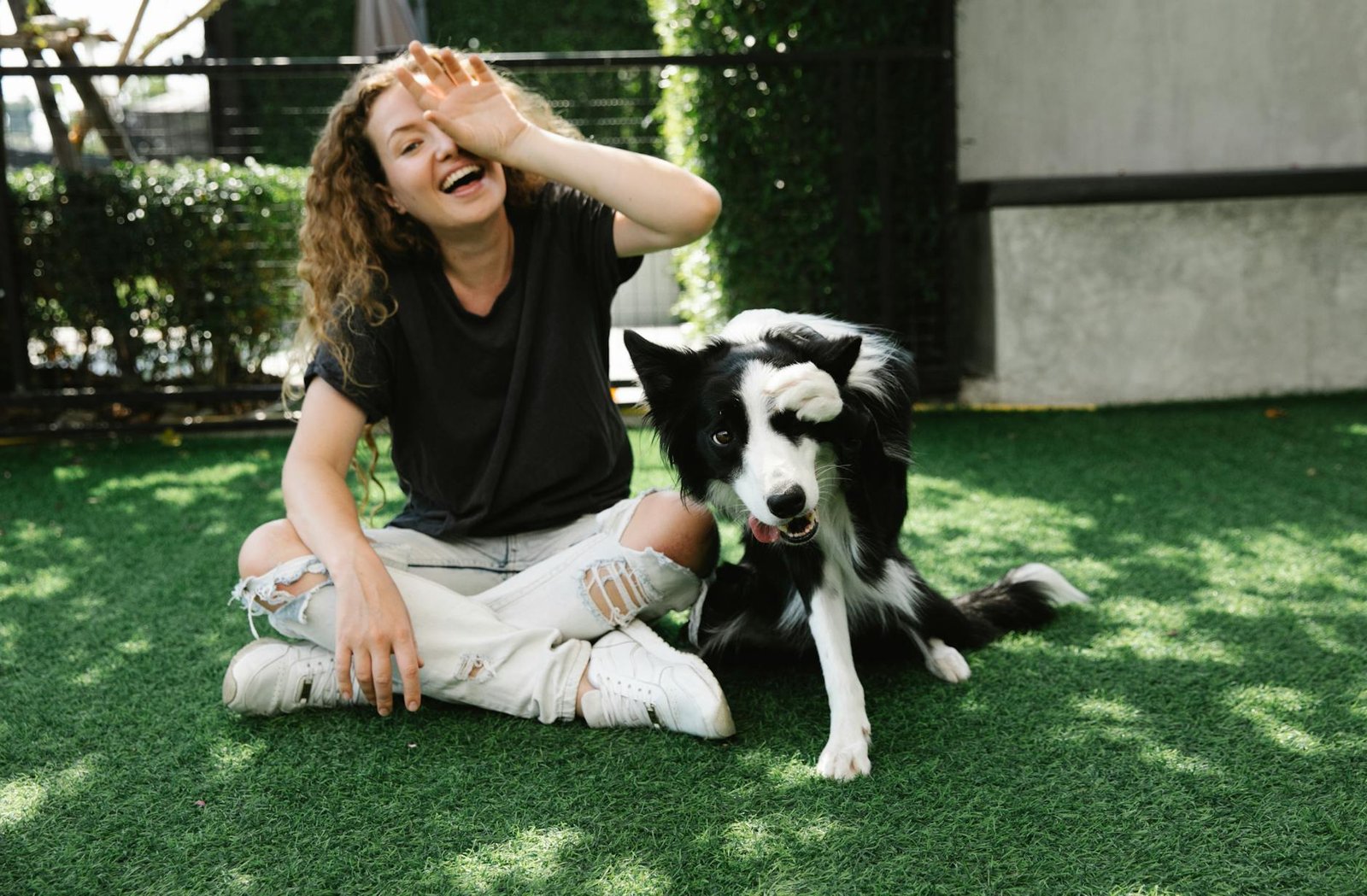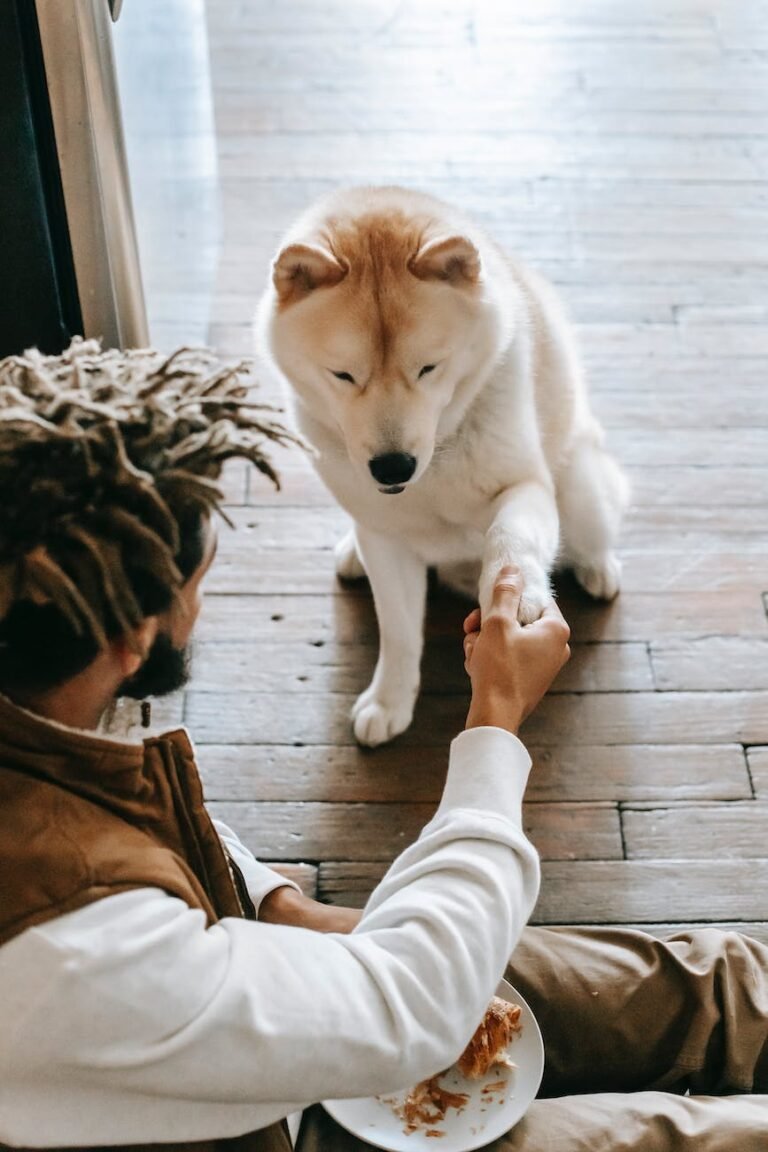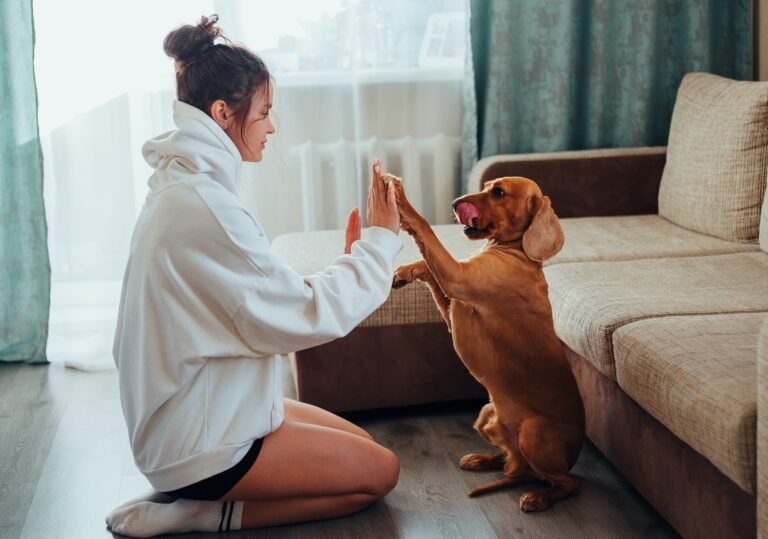Unleash the Magic: Learn Fun Tricks to Teach Your Dog
The Joy of Teaching Your Dog Tricks
Teaching your dog tricks is not only a delightful and entertaining experience but also offers numerous benefits for both you and your furry friend. By engaging in training sessions and teaching your dog tricks, you can strengthen the bond between you and your canine companion while providing mental stimulation and promoting good behavior.
Benefits of Teaching Your Dog Tricks
The benefits of teaching your dog tricks extend beyond the fun and entertainment factor. Here are some key advantages:
-
Mental Stimulation: Teaching your dog tricks requires them to use their brain and problem-solving skills. This mental stimulation can help prevent boredom and can be particularly beneficial for high-energy breeds.
-
Enhanced Communication: Through training sessions, you and your dog develop a common language and understanding. This improves communication and strengthens the bond between you, leading to a more harmonious relationship.
-
Improved Focus and Obedience: As you teach your dog tricks, they learn to focus on you and follow your instructions. This can translate to improved overall obedience and responsiveness in daily routines.
-
Confidence Building: Successfully learning and performing tricks can boost your dog’s confidence and self-esteem. This newfound confidence can positively impact their behavior and overall well-being.
-
Enrichment and Entertainment: Tricks provide mental and physical enrichment for your dog, keeping them engaged and entertained. This is especially valuable during times when outdoor activities may be limited.
Effective Training Techniques for Success
To ensure successful training sessions, it’s important to use effective techniques that promote learning and positive experiences. Here are a few techniques to consider:
-
Positive Reinforcement: Reward-based training using treats, praise, and playtime is a highly effective method. It encourages desired behaviors and motivates your dog to learn and perform tricks. For more information on positive reinforcement, check out our article on positive reinforcement dog training.
-
Clicker Training: Incorporating a clicker can help mark desirable behaviors and pinpoint the exact moment your dog performs the desired action. This technique, known as clicker training, can aid in communication and speed up the learning process. Learn more about clicker training in our article on clicker training for dogs.
-
Break Down the Trick: When teaching a new trick, break it down into smaller, manageable steps. This allows your dog to understand and master each component before moving on to the next. By gradually building upon their success, your dog will gain confidence and learn more effectively.
-
Consistency and Patience: Consistency is key in dog training. Set aside regular training sessions and be patient with your dog’s progress. Each dog learns at their own pace, so avoid rushing or becoming frustrated. Celebrate small victories along the way.
Remember, the joy of teaching your dog tricks lies in the process itself. Enjoy the journey of bonding, learning, and having fun with your furry friend. For more tips and guidance on dog training, especially if you’re a beginner, visit our article on dog training for beginners.
In the following sections, we will explore basic, intermediate, and advanced tricks that you can teach your dog. These tricks will not only impress your friends and family but also provide endless entertainment and enrichment for your canine companion. Let’s get started with some easy and fun tricks in the next section.
Basic Tricks for Beginners
Teaching your dog tricks is a wonderful way to bond with your furry friend and stimulate their mind. Starting with basic tricks is a great way to build a foundation for more advanced training. In this section, we will explore four basic tricks that are perfect for beginners: sit, stay, lie down, and shake hands.
Sit
Teaching your dog to sit is often one of the first tricks to introduce. It is a fundamental command that can be used in various situations. Follow these steps to teach your dog to sit:
- Hold a treat close to your dog’s nose, and slowly move your hand up, allowing their head to follow the treat.
- As their head moves up, their bottom will naturally lower into a sitting position.
- Once they are in the sitting position, say the command “sit” and reward them with the treat.
- Repeat this process several times, gradually phasing out the treat and relying more on the verbal command and praise.
Remember to keep training sessions short and positive. For more training techniques, check out our article on clicker training for dogs.
Stay
Teaching your dog to stay is an essential command for their safety and the convenience of others. Here’s how you can teach your dog to stay:
- Start with your dog in a sitting position.
- Open your palm towards them, say the command “stay,” and take a step back.
- If your dog remains in the sitting position, immediately return to them and reward them with praise and a treat.
- Gradually increase the distance and duration of the stay, always returning to reward them for their success.
- Practice this command in different environments to reinforce their understanding.
Lie Down
The “lie down” command is useful for keeping your dog calm and helping them settle in various situations. Follow these steps to teach your dog to lie down:
- Start with your dog in a sitting position.
- Hold a treat close to their nose and slowly lower your hand towards the ground.
- As your hand moves down, their body should follow, naturally transitioning into a lying down position.
- Once they are lying down, say the command “lie down” and reward them with the treat.
- Repeat this process, gradually phasing out the treat and relying more on the verbal command and praise.
Shake Hands
Teaching your dog to shake hands is not only adorable but also a great way to establish a friendly connection. Here’s how you can teach your dog to shake hands:
- Start with your dog in a sitting position.
- Hold a treat in your closed hand, and present it to your dog.
- Your dog may initially try to paw at your hand to get the treat. When they lift their paw, say the command “shake” and reward them with the treat.
- Repeat this process, gradually opening your hand less and less until your dog understands that they need to extend their paw towards your closed hand to receive the treat.
- Once your dog consistently offers their paw, you can introduce the verbal command “shake” before presenting your hand.
By patiently and consistently practicing these basic tricks, you’ll lay a solid foundation for more advanced training. Remember to use positive reinforcement and reward-based methods to make the experience enjoyable for both you and your furry friend. For more tips and tricks on dog training, check out our article on dog training for beginners.
Intermediate Tricks to Impress
Once your dog has mastered the basic tricks, it’s time to move on to some more impressive moves. These intermediate tricks will not only entertain your friends and family but also challenge your dog mentally and physically. Let’s explore four fun intermediate tricks that will surely make your dog the star of the show.
Roll Over
Teaching your dog to roll over is a classic trick that never fails to impress. To begin, have your dog lie down and give the command “roll over” in a clear and enthusiastic tone. Take a treat and hold it close to your dog’s nose, then slowly move your hand in a circular motion towards their shoulder. As your dog follows the treat, their body will naturally roll over. Once your dog completes the roll, reward them with praise and a treat. Remember to be patient and reward your dog for even small progress. For more tips on dog training, check out our article on dog training for beginners.
Spin
The spin trick adds a touch of elegance to your dog’s repertoire. Start by standing in front of your dog with a treat in hand. Lure your dog into a spin by moving the treat in a circular motion in front of their nose, encouraging them to follow it. As they complete the spin, say the command “spin” and reward them with the treat. Repeat this process until your dog becomes comfortable with the command. For added flair, you can teach your dog to spin in both directions. Remember to use positive reinforcement, such as praise and treats, to motivate and reward your dog’s efforts. If you’re interested in learning more about positive reinforcement training techniques, check out our article on positive reinforcement dog training.
Play Dead
Play dead is a crowd-pleasing trick that showcases your dog’s acting skills. Start by having your dog lie down on their side. Once they are in position, give the command “play dead” and gently guide their head to the ground while holding a treat in front of their nose. As your dog lies still, reward them with praise and the treat. It may take some time for your dog to hold the position, so be patient and practice in short sessions. With consistent training and positive reinforcement, your dog will become a master of playing dead.
High Five
Teaching your dog to give a high five is not only adorable but also a great way to engage with them. Begin by getting your dog into a sitting position. Hold a treat in your closed hand and place it in front of your dog’s paw. When they attempt to paw at your hand, say the command “high five” and open your hand to reveal the treat. Reward your dog with the treat and praise for their successful high five. With practice, your dog will learn to associate the command with the action and perform a high five on command.
By mastering these intermediate tricks, your dog will continue to grow in confidence and skills. Remember to use positive reinforcement, be patient, and keep training sessions fun and engaging. If you’re looking for more easy tricks to teach your dog, check out our article on easy dog tricks to teach. Keep up the good work, and soon your dog will be ready to learn even more advanced tricks!
Advanced Tricks for the Showstopper
If you’re looking to take your dog’s trick repertoire to the next level, here are some advanced tricks that are sure to impress everyone around.
Fetch
Teaching your dog to fetch is a classic and practical trick. Start by introducing your dog to the concept of fetching by using their favorite toy. Encourage them to take the toy in their mouth and bring it back to you. Use verbal cues such as “fetch” and reward them with treats and praise when they successfully retrieve the toy. Gradually increase the distance and continue reinforcing the behavior. Remember, consistency and positive reinforcement are key to successful training. For more detailed information on clicker training and positive reinforcement, check out our articles on clicker training for dogs and positive reinforcement dog training.
Speak
Teaching your dog to speak on command can be a fun and entertaining trick. Begin by getting your dog excited or trigger their natural tendency to bark, like knocking on a door. As soon as they bark, say the command “speak” and reward them with treats and praise. Repeat this process and gradually introduce the command without the trigger. With consistent practice, your dog will learn to associate the command with barking. Remember to reward them each time they successfully respond to the command.
Jump Through Hoop
The trick of jumping through a hoop is visually impressive and can be a great addition to your dog’s trick repertoire. Start by holding the hoop close to the ground and encouraging your dog to walk through it by using treats or their favorite toy as a lure. Gradually raise the hoop a little higher each time they successfully pass through. Use the command “jump” or any other cue you prefer, and reward them with treats and praise. Practice the trick regularly, gradually increasing the height of the hoop as your dog becomes more comfortable and confident.
Balance Treat on Nose
Teaching your dog to balance a treat on their nose is not only impressive but also requires focus and self-control. Begin by having your dog sit or lie down. Place a treat on their nose and give the command “wait” or “balance.” Encourage them to keep the treat balanced without eating it. Start with short durations and gradually increase the time before giving the release command, such as “take it” or “okay.” Reward them with the treat and praise when they successfully balance it. This trick requires patience and practice, so be sure to take it one step at a time.
With these advanced tricks, remember to break the training process down into small steps and practice in short sessions. Patience, consistency, and positive reinforcement are essential for successful training. For more information on dog training techniques for beginners and additional easy tricks to teach your dog, check out our articles on dog training for beginners and easy dog tricks to teach. Keep challenging yourself and your dog, and have fun unleashing their magic through these impressive tricks.
Tips for Successful Training
Teaching your dog tricks can be a rewarding experience for both you and your furry friend. To ensure successful training sessions, it’s important to follow some key tips and techniques. Here are four essential tips to keep in mind:
Use Positive Reinforcement
Positive reinforcement is a highly effective training technique that involves rewarding your dog for desired behaviors. When teaching your dog tricks, be sure to use treats, praise, and affection to reinforce their good behavior. This positive association motivates your dog to repeat the desired action and strengthens the bond between you and your pet.
Remember to use high-value treats that your dog finds especially enticing. Small, soft treats are ideal for quick rewards during training sessions. Additionally, you can incorporate a clicker to mark the precise moment your dog performs the trick correctly. For more information on clicker training, check out our article on clicker training for dogs.
Be Patient and Consistent
Patience is key when training your dog. Learning new tricks takes time, and each dog progresses at their own pace. Stay calm, be patient, and avoid getting frustrated if your dog doesn’t grasp a trick immediately. Consistency is also crucial. Set aside regular training sessions, preferably at the same time each day, to establish a routine. Dogs thrive on consistency, and it helps them understand what is expected of them.
Break Down the Trick into Small Steps
To make training more manageable for your dog, break down each trick into small, achievable steps. Start with the basic elements of the trick and gradually add complexity as your dog becomes more comfortable. For example, if you’re teaching your dog to “roll over,” begin by rewarding them for lying on their side, then progress to rewarding them for rolling onto their back. Continue to build upon these small steps until your dog can perform the full trick successfully.
Practice in Short Sessions
Training sessions should be short and focused, typically lasting around 10 to 15 minutes. Dogs have shorter attention spans, so keeping the sessions brief helps maintain their focus and prevents them from becoming overwhelmed or bored. Frequent short sessions are more effective than infrequent long sessions.
During each training session, aim to repeat the trick multiple times with breaks in between. This repetition helps reinforce the behavior and allows your dog to solidify their understanding of the trick. Remember to end each session on a positive note, even if your dog hasn’t fully mastered the trick yet.
By following these tips, you can create a positive and successful training experience for both you and your dog. Remember to use positive reinforcement, be patient and consistent, break down the trick into manageable steps, and practice in short sessions. With time and dedication, your dog will be impressing everyone with their newfound tricks. For more easy tricks to teach your dog, check out our article on easy dog tricks to teach.







